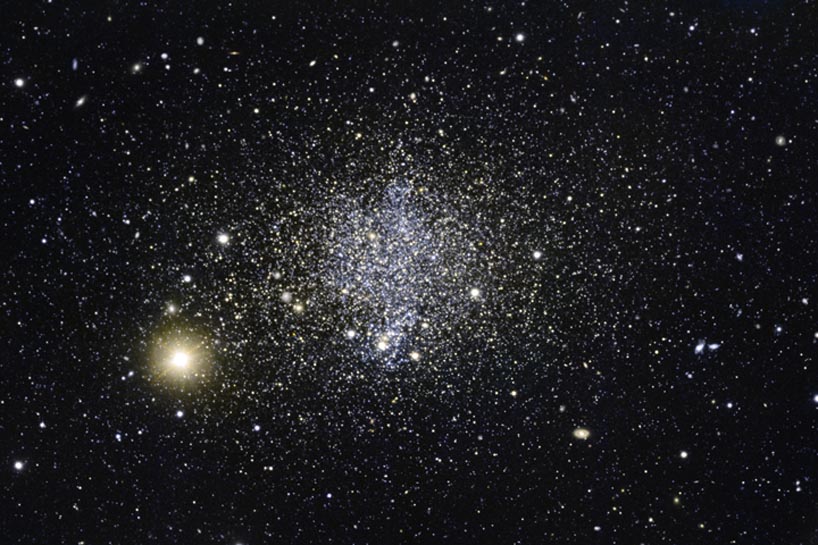
Dwarf Galaxy
RA 1h 51m 6.35s Dec -44° 26' 32.60"
Phoenix
1.44 million light-years
13.1
4.9 × 4.1 arcmin
12.14 x 8.40 arcminutes
North is 90.1° right of vertical
ESO
September 17, 2018
ABOUT THIS IMAGE:
This image shows a dwarf galaxy in the southern constellation of Phoenix named, for obvious reasons, the Phoenix Dwarf.
The Phoenix Dwarf is unique in that it cannot be classified according to the usual scheme for dwarf galaxies; while its shape would label it as a spheroidal dwarf galaxy - which do not contain enough gas to form new stars - studies have shown the galaxy to have an associated cloud of gas nearby, hinting at recent star formation, and a population of young stars.
The gas cloud does not lie within the galaxy itself, but is still gravitationally bound to it - meaning that it will eventually fall back into the galaxy over time. Since the cloud is close by, it's likely that the process that flung it outwards it is still ongoing. After studying the shape of the gas cloud, astronomers suspect the most likely cause of the ejection to be supernova explosions within the galaxy.
From Wikipedia:
The Phoenix Dwarf is a dwarf irregular galaxy discovered in 1976 by Hans-Emil Schuster and Richard Martin West and mistaken for a globular cluster. It is currently 1.44 Mly away from Earth. Its name comes from the fact that it is part of the Phoenix constellation.
The
Phoenix Dwarf has an inner part of young stars which is stretched in an
east-west direction and an outer part of mainly old stars that is stretched
north-south. The central region's rate of star formation seems to have
been relatively constant across time (Martínez-Delgado et al. 1999).
In 1999, St-Germain et al. discovered an H I region of about 105 M? just
to the west of Phoenix. Its radial velocity is -23 km/s and may be physically
associated with Phoenix if it is found to have a similar radial velocity.